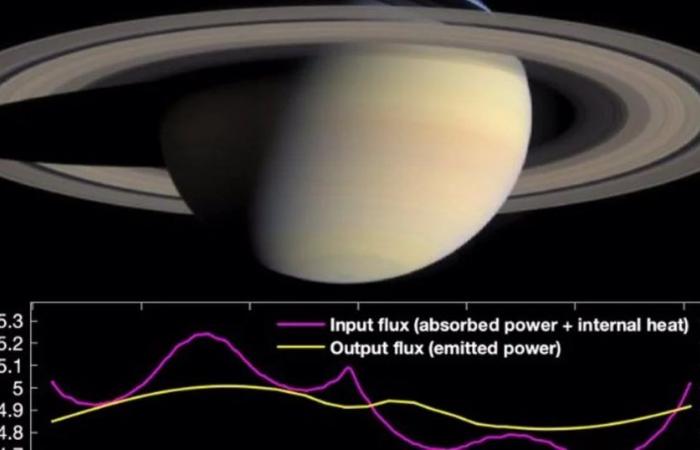Researchers at the University of Houston have discovered a massive energy imbalance on Saturn, challenging existing climate models for the solar system’s gas giants. The findings, which shed new light on planetary science, appear in the scientific journal Nature Communications. “This is the first time that a global energy imbalance on a seasonal scale has been observed in a gas giant,” Liming Li, professor of physics in the Faculty of Natural Sciences and Mathematics, said in a statement. “This not only gives us a new perspective on the formation and evolution of planets, but also changes the way we should think about planetary and atmospheric science.” Using data from the Cassini probe mission, Xinyue Wang, a doctoral student in the Department of Earth and Atmospheric Sciences, found a significant and previously unknown seasonal energy imbalance at Saturn. “Each planet obtains energy from the sun in the form of solar radiation and loses energy by emitting thermal radiation,” Wang said. “But Saturn, like the other gas giants, has another energy input in the form of deep internal heat that affects its thermal structure and climate”. The imbalance is due to Saturn’s large orbital eccentricity, which varies by almost 20% from aphelion (the point in the orbit farthest from the sun) to perihelion (the point in the orbit closest to the sun), which It gives rise to enormous seasonal variations in the solar energy absorbed. Unlike Saturn, Earth does not experience a significant seasonal energy imbalance due to its very small orbital eccentricity. “The Earth has a measurable energy budget, but it is determined mainly by the solar energy absorbed and the thermal energy emitted,” said atmospheric sciences professor Xun Jiang. “Earth’s internal heat is negligible and its seasons last only a few months compared to the years-long seasons on Saturn.” The data also suggests that Saturn’s unbalanced energy budget plays a key role in the development of giant storms, which are a dominant weather phenomenon in the planet’s atmospheric system. This data can also provide some information about the climate on Earth. “To our knowledge, the role of the energy budget in the development of wet and convective storms on Earth has not been fully examined, so we plan to investigate that as well to see if there is a connection,” Wang said. The Cassini mission, a An ambitious collaborative effort between NASA, the European Space Agency, and the Italian Space Agency, it launched in 1997 and explored Saturn and its rings and moons for nearly 20 years. Professor Li was chosen as a participating scientist to monitor three onboard instruments that observed Saturn’s radiant energy budget. “In current models and theories of the atmosphere, climate and the evolution of gas giants, the global energy budget is assumed to be balanced,” Wang said. “But we believe that our discovery of this seasonal energy imbalance requires a reassessment of those models and theories.” Li’s team now has its sights set on the other gas giants, including Uranus, where a flagship exploration mission is planned in the next decade. “Our data suggests that these planets will also have significant energy imbalances, especially Uranus, which we predict will have the strongest imbalance due to its orbital eccentricity and very high obliquity,” Wang said. “What we are investigating now will identify limitations in current observations and formulate testable hypotheses that will benefit that future flagship mission.”
For Latest Updates Follow us on Google News


